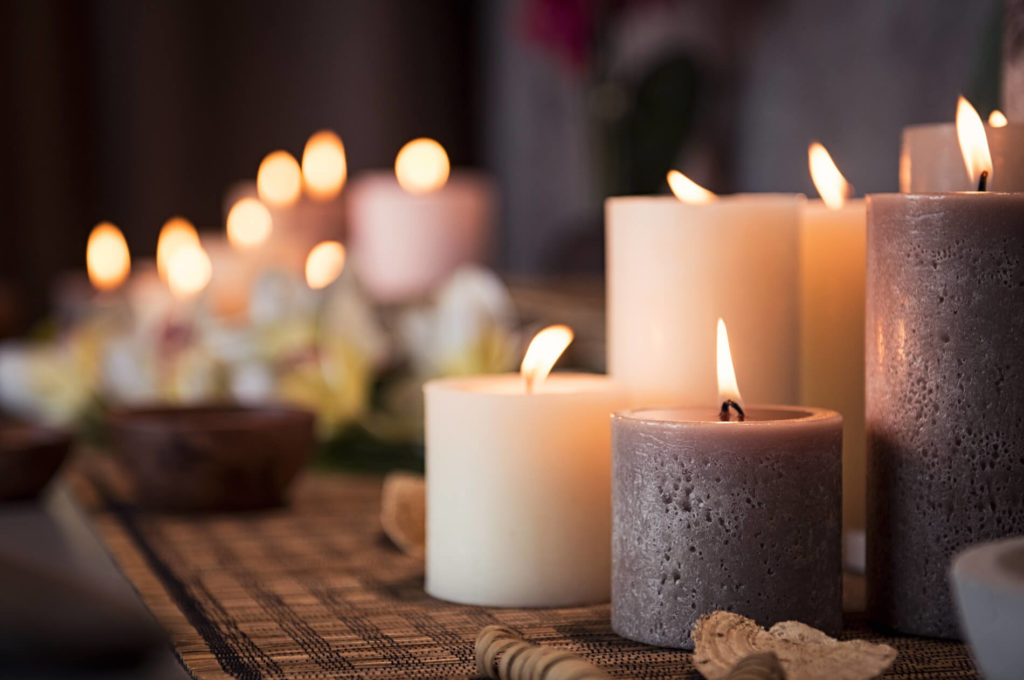Imagine an evening spent relaxing in the comfort of your own home, with a hand-poured, artisanal Charles Farris candle flickering in the background.
Nothing can disrupt this tranquil scene faster than a candle that’s tunnelling – where the wick burns straight down the middle, leaving a hard ring of wax around the edges. Not only does this significantly shorten the candle’s life, but it also takes away from the candle’s ambience and appearance. Thankfully, it’s relatively easy to prevent candle tunnelling and ensure a clean, even burn every time. In this blog, we will dive into the essence of candle care, covering the following topics:
- Understanding candle tunnelling
- The importance of the first burn
- Candle trimming and its benefits
- The role of burn time
- Additional tips for preventing tunnelling
- The value of quality candles
Understanding candle tunnelling
Candle tunnelling happens when a candle burns down the centre, creating a deep well or ‘tunnel’ that’s surrounded by a ring of unburnt wax.
This typically happens if the candle did not burn long enough in the early stages of its life. The way a candle burns during its initial light often indicates how it will continue to burn thereafter. If a candle doesn’t melt to the edges on the initial burn, it is likely to continue to burn straight down, creating the tunnel effect.
Tunnelling affects a candle in several ways. Primarily, it reduces the longevity of your candle. When a candle tunnels, the wick starts to sink lower and lower, leaving a ring of unburnt wax on the sides. This can mean your beautiful candle is wasted, as once this happens, the trapped wax cannot be used. It can even make it difficult to light the candle after some time, as the wick becomes buried deep within the well.
The importance of the first burn
The first burn is often referred to as setting the ‘memory ring’ of the candle, as it determines how your candle will continue to burn throughout its life. If the wax is not allowed to melt to the edge on its first burn, the candle will continue to tunnel in all following burns.
In other words, candles have a memory. They remember how far they melted and pooled the last time they were lit and will aim to reach that point again.
To set a good memory ring, you should allow your candle to burn one hour for each inch in diameter on the first use. For example, if your Charles Farris candle is 3 inches in diameter, you should let it burn for about 3 hours on the first light. This should allow the wax to melt and pool to the edges of the candle, setting a good memory ring and preventing future tunnelling.
The role of burn time
While the time you first burn your candle is a crucial part of preventing tunnelling, it’s important to keep this in mind as you continue to use your candle. After the initial burn, try to aim for burning your candle for 1 to 2 hours for smaller candles, and 2 to 3 hours for larger ones. This helps ensure an even burn, avoiding potential tunnelling.
However, just as under-burning can lead to wasting wax, so can over-burning. As such, we’d recommended not to burn a candle for more than 4 hours at a time. Doing so can cause the wick to form a ‘mushroom’ at the tip, as well as potentially leading to a too-deep melt pool.
Candle trimming and its benefits
Trimming the wick can also help with candle maintenance as it helps control the size of the flame, ensuring it doesn’t become too large and cause unnecessary heat, soot, or flaring.
https://www.high-endrolex.com/40Untrimmed wicks can also lead to a ‘mushroom’ at the tip, causing excessive flickering and smoke.
Ideally, the wick should be trimmed after every 4 hours of burn time. Allow the candle to cool, remove any wick debris, and trim the wick to about 1/4 inch before relighting. You can buy wick trimmers online, or simply use a pair of scissors.
Additional tips for preventing tunnelling
If you have used the above methods and your candles are still tunnelling, there are a few other things you can look into.
Placement
Just as important as how you burn your candle, is where you burn it. For instance, placing your candle in a draughty area can cause the flame to flicker and the candle to burn unevenly. To avoid this, place your candles on a stable, heat-resistant surface away from draughts and vents.
The foil trick
If your candle has already started to tunnel, all is not lost – try using the foil trick to get it back on track. Wrap a layer of aluminium foil around the top of the candle, leaving a small hole in the middle for the flame. This will allow the heat to be trapped and help melt the stubborn hard ring of wax on the sides.
Room temperature
The room temperature can also impact how your candle burns. A room that’s too cold may cause the candle to solidify quickly, before it has a chance to properly settle. Ideally, you should keep your candles in a stable, room-temperature environment.
The value of quality candles
The quality of a candle greatly influences how it burns. That is why, at Charles Farris, we only use the best materials and techniques in our production process, ensuring that every aspect – from the wax to the wick to the fragrance – has been carefully curated.
Good quality wax ensures a clean, even burn, while the wick determines how fast and smoothly the candle will continue to burn after its first use. Poorly made wicks can also lead to smoking, soot, or an unstable flame.
In summary
No matter what type of candle you have, you will get the most out of it if you keep it well-maintained. Trim the wick, make sure you burn it for the right amount of time and remember, if it tunnels, use the foil trick to get it back on track.
If you start with a good quality candle you will be setting yourself up for success. By choosing a Charles Farris candle, you’re investing in a product that comes from extensive experience, superior craftsmanship, and high-quality materials.
It’s not just a candle; it’s an experience that transforms your space and creates an ambiance of luxury and comfort. Have a look through our range of candles to add a touch of contemporary relaxation to your home.






